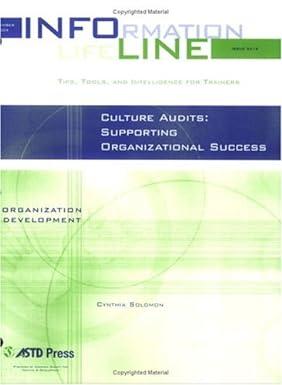Question
Many of the richest individuals have added professional sports teams to their ownership portfolios. Paul Allen owns the Seattle Seahawks after founding Microsoft, and another
Many of the richest individuals have added professional sports teams to their ownership portfolios. Paul Allen owns the Seattle Seahawks after founding Microsoft, and another Microsoft alumnus, Steve Balmer, now owns the Los Angeles Clippers. They, like most other owners of sports teams, including Shahid Khan (Jacksonville Jaguars), Jerry Jones (Dallas Cowboys), the Rickets family (Chicago Cubs of Major League Baseball), and Geoff Molson (Montreal Canadiens of the National Hockey League), all have corporate structures that operate as forprofit organizations. There is one exception to the corporate structure, however. The Green Bay Packers are unique among North American sports teams in that they are a community-owned not-for-profit. They do have shareholders, but the shareholders have limited rights and most shares are bought so that fans can claim ownership and use the stock certificate as a piece of pride of ownership in a unique community treasure. The shares do not pay dividends, and any proceeds from any possible sale or liquidation of the team go to a charity, not the shareholders. This system, plus transfer restrictions and a cap on the number of shares that any single individual can own, ensures that the team remains in public hands and will never leave the city of Green Bay. Every shareholder in the Green Bay Packers received a ballot for electing the teams board of directors, who then select an executive committee of seven individuals who will meet with chief executive officer Mark Murphy, a former NFL player who also served as the athletic director at Northwestern University prior to joining the Packers. Murphy is charged with hiring other leadership positions, such as the general manager, who then hires the head coach, who is charged with hiring the assistant coaches. So, what are the negatives to what seems like a perfect organizational structure? Many owners in other cities are able to price their tickets to the market and also able to create revenue streams from corporate advertising in the stadium as well as stadium-naming rights. The Packers have some of the lowest-priced tickets in the league despite 80,000 requests on their season ticket waiting list. Also, teams in other cities can negotiate with city, county, and other government agencies for subsidies and tax breaks for building new stadiums and use the threat of a move to another city as a bargaining chip. For instance, the St. Louis Rams and San Diego Chargers recently moved to Los Angeles while the Oakland Raiders will soon call Las Vegas home. Another potential drawback is that the organizational structure of the Packers restricts the ability to make organizational changes such as changing the general manager or head coach quickly if things are going badly. Luckily for the Packers, this has not been much of a problem lately having had success with star quarterbacks such as Brett Favre and Aaron Rodgers!
1. Is the not-for-profit form of business organization appropriate for the Green Bay Packers? Why or why not?
2. Why has this form of ownership not been replicated in other cities?
3. What are the limitations and constraints that this form of business has on the operations of the Green Bay Packers?
Step by Step Solution
There are 3 Steps involved in it
Step: 1

Get Instant Access to Expert-Tailored Solutions
See step-by-step solutions with expert insights and AI powered tools for academic success
Step: 2

Step: 3

Ace Your Homework with AI
Get the answers you need in no time with our AI-driven, step-by-step assistance
Get Started


